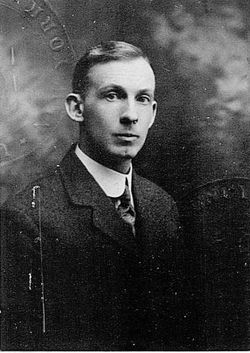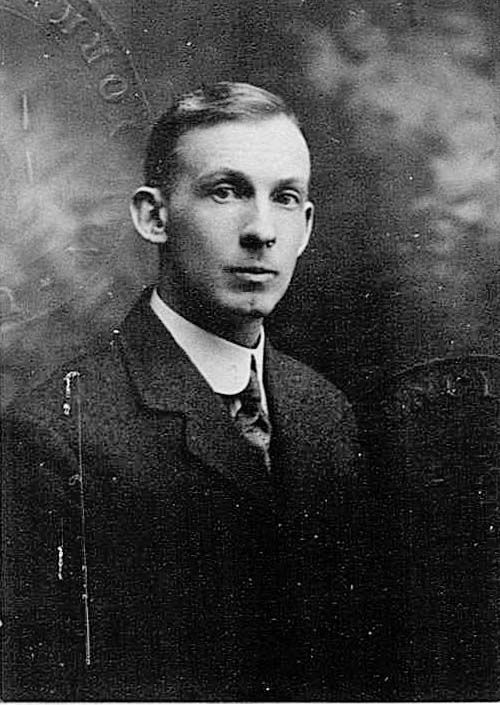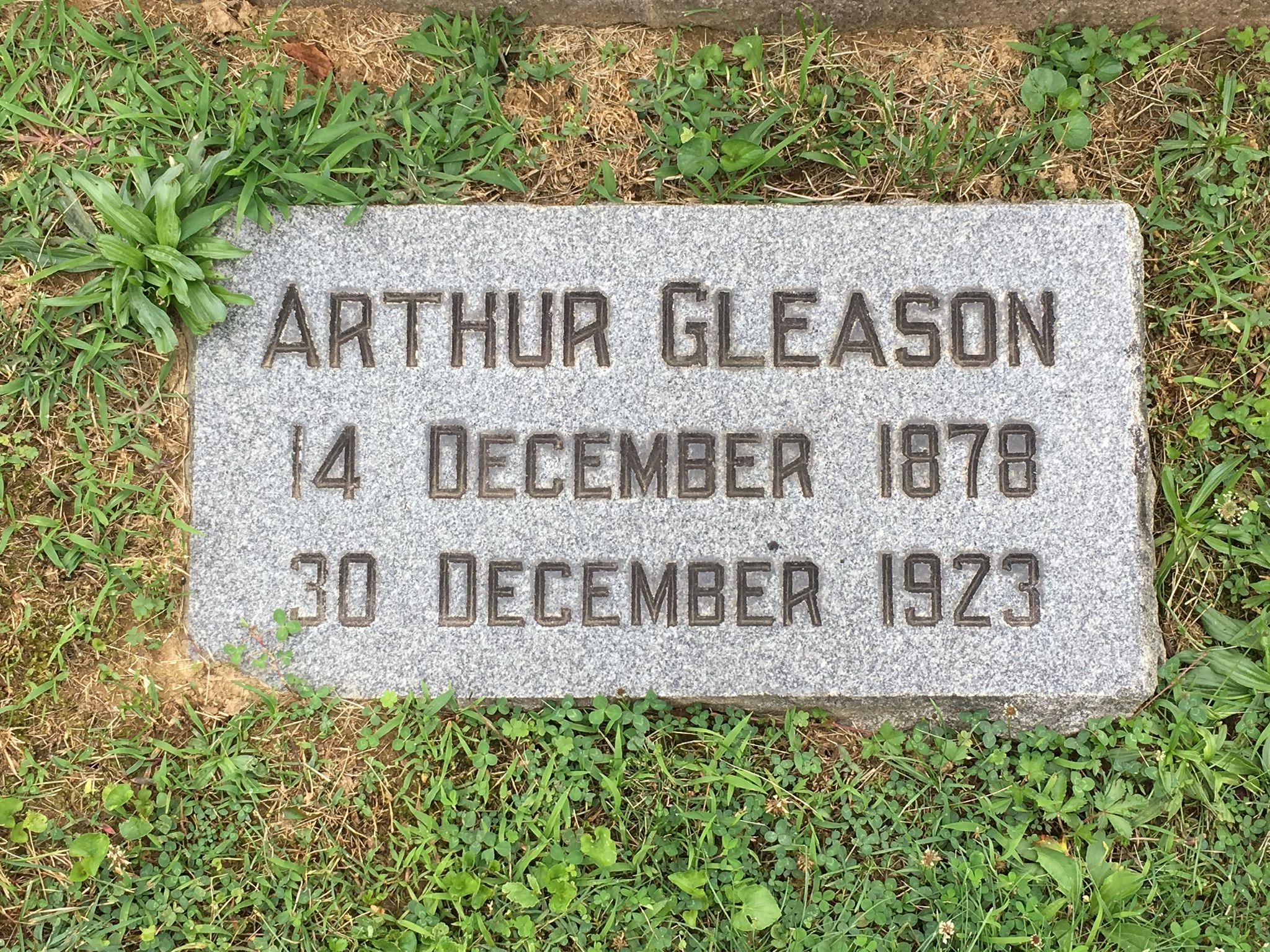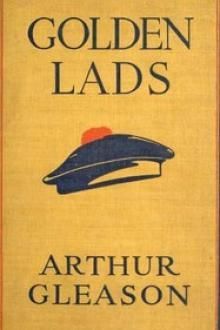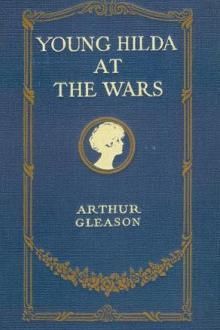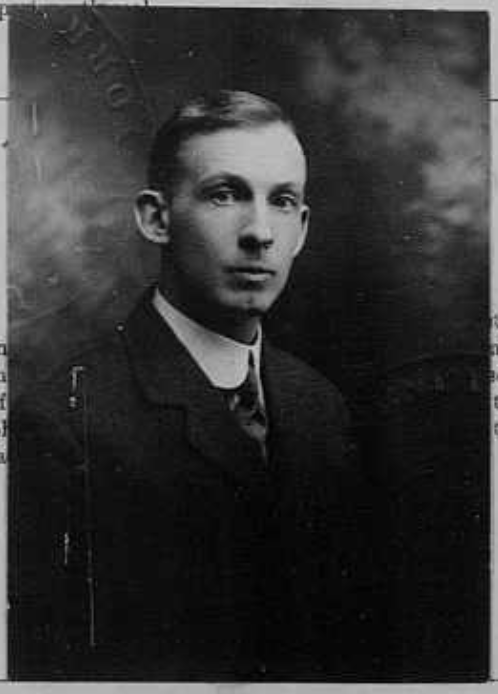Gleason also served as an ambulance driver for the Belgian army and was captured by the Germans, but managed to escape and report on the German invasion of Belgium. When he returned to the United States, he worked for the Bureau of Industrial Research and for John Brophy of the United Mine Workers. Gleason was awarded the Mons Star and Ribbon in 1919.
He wrote What the Workers Want in 1921. Gleason also wrote "The Darker Side," a collection of personal reflections on a personal crisis of his. Together Arthur and Helen wrote a book entitled "Golden Lads" with an introduction by President Theodore Roosevelt.
Gleason died of spinal meningitis in 1923.
_________________________________
Biographical Timeline:
1901 B.A., Yale University, New Haven, Conn.
1901 1903 Reporter, New York Tribune
1903 Manuscript editor, Cosmopolitan
1904 1907 Assistant editor, Country Life in America, The Survey
1908 1913 Associate editor, Collier's Weekly
1912 Married Helen Hayes
1914 1915 Red Cross worker, Hector Monro Ambulance Corps, Belgium
1916 1917 European correspondent, New York Tribune and Century Magazine
1917 Writer, Publicity Department, YMCA, American Expeditionary Forces
1919 English correspondent, The Survey Awarded Mons Star and Ribbon by the British War Office Published with Paul U. Kellogg British Labor and the War. New York: Boni and Liveright
1920 Returned to the United States Published What the Workers Want. New York: Harcourt, Brace, and Howe
1921 Published Workers' Education. New York: Bureau of Industrial Research
1921 1922 Staff member, Bureau of Industrial Research Collaborated with John Brophy in advancing miners' plan for nationalization of the coal industry
1923 Moved to San Diego, Calif.
1923, Dec. 30 Died, Washington, D.C.
_________________________________
Access to his books: https://manybooks.net/authors/gleasona.html
_________________________________
The papers of Arthur Huntington Gleason (1878-1923) span the years 1863-1931, with the bulk of the material concentrated in the period 1900-1923. Consisting of family correspondence, general correspondence, writings file, subject file, and miscellany including clippings and printed matter, the papers chart Gleason's career from his graduation from Yale University to his death from spinal meningitis in 1923. Letters and related material document his early years as an editor with Cosmopolitan, The Survey, and Collier's Weekly, but the major part of the collection relates to his years in Europe, 1914-1920. Gleason and his wife Helen Hayes were among a group of youthful American writers who volunteered to perform humanitarian service on behalf of the Allies during the first years of World War I, and it is this phase and the subsequent years of reconstruction and political turmoil that are treated most prominently in the collection. By the time Gleason returned to the United States in 1920, he had become a student of the British labor movement as well as a veteran observer of combat, and his growing socialist convictions led him to a career in research and public relations work for various labor organizations.
The papers in this collection focus chiefly on World War I. As a journalist and ambulance worker for the Red Cross in Belgium, Gleason became a proponent of the Allied cause. In addition to reporting on Allied soldiers and Belgium's defeated populace, he relayed stories of German atrocities back to the United States and served as an intermediary for English writers seeking to influence public opinion in this country in favor of the English position. Manuscripts of two of these writers, G. K. Chesterton and James Bryce, are among the articles and interview transcripts which Gleason sent to the United States from England for publication, and he retained them in his papers. Also in the collection are exchanges with Geoffrey B. Butler, J. J. Jusserand, the French ambassador to Washington, and Baron Eustace Percy of Newcastle on issues such as the Irish question, American isolationism, and the political and social ramifications of immigration to the United States. The impact of ethnicity on the American character, a frequent postwar theme of Gleason's, was a topic which he addressed in a series of articles on the status of Jews in America published by Hearst's International. Pertinent to this series are letters he received in 1922-1923 from Felix Frankfurter, Ludwig Lewisohn, Walter Lippmann, Julian W. Mack, and Stephen Samuel Wise.
Following his return to the United States in 1920, Gleason worked on behalf of the Bureau of Industrial Research and John Brophy of the United Mine Workers. Papers relevant to this aspect of his life are contained in the Correspondence series, in the Subject File under Bureau of Industrial Research, and the Writings File. Among the individuals who appear either as correspondents or in biographical sketches are John Blankenhorn, Bruce Bliven, John Brophy, Robert W. Bruère, Herbert David Croly, Andrew Furuseth, Frank Hodges, Vida Dutton Scudder, Robert Smillie, and Norman Thomas. After 1922 Gleason turned to writing about the new civilization he believed was emerging in the Southwest and to the varieties of religious experience he saw in California. He also underwent a personal crisis as a writer which is documented in private reflections he titled "The Darker Side." These and similar holograph notes are contained in the Writings File, as are transcripts of interviews he conducted with Percy Stickney Grant, Charles Proteus Steinmetz, Ili͡a L'vovich Tolstoĭ, Charles Richard Van Hise, and others.
The family correspondence, although a relatively small part of the collection, is a source of biographical data. Letters Gleason sent his mother in 1906 include critical comments on Jane Addams's personality, and a file for 1915 contains descriptions of Gleason in action as a medic and reporter on the Western Front. Also in the family correspondence are letters sent and received by Helen Hayes Gleason during the war and a few exchanges which Gleason sent or wrote during boyhood. Letters of condolence to Helen Hayes Gleason after her husband's death are located in the general correspondence as are papers generated during her compilation of The Book of Arthur Gleason (1929). The family correspondence includes a letter of 1863 sent by a deacon of Henry Ward Beecher's Plymouth Congregational Church in Brooklyn to Gleason's maternal grandmother requesting that she accept an offer to fill Beecher's pulpit temporarily in his absence.
source:
http://rs5.loc.gov/service/mss/eadxmlmss/eadpdfmss/2009/ms009002.pdf
___________________________
More:
https://digital.janeaddams.ramapo.edu/items/show/11499
____________________________
Buried with his mother Leila. D.C. death records list his wife as Helen Gleason and say he was a writer. He was buried at Rock Creek on 1/3/1924.
Gleason also served as an ambulance driver for the Belgian army and was captured by the Germans, but managed to escape and report on the German invasion of Belgium. When he returned to the United States, he worked for the Bureau of Industrial Research and for John Brophy of the United Mine Workers. Gleason was awarded the Mons Star and Ribbon in 1919.
He wrote What the Workers Want in 1921. Gleason also wrote "The Darker Side," a collection of personal reflections on a personal crisis of his. Together Arthur and Helen wrote a book entitled "Golden Lads" with an introduction by President Theodore Roosevelt.
Gleason died of spinal meningitis in 1923.
_________________________________
Biographical Timeline:
1901 B.A., Yale University, New Haven, Conn.
1901 1903 Reporter, New York Tribune
1903 Manuscript editor, Cosmopolitan
1904 1907 Assistant editor, Country Life in America, The Survey
1908 1913 Associate editor, Collier's Weekly
1912 Married Helen Hayes
1914 1915 Red Cross worker, Hector Monro Ambulance Corps, Belgium
1916 1917 European correspondent, New York Tribune and Century Magazine
1917 Writer, Publicity Department, YMCA, American Expeditionary Forces
1919 English correspondent, The Survey Awarded Mons Star and Ribbon by the British War Office Published with Paul U. Kellogg British Labor and the War. New York: Boni and Liveright
1920 Returned to the United States Published What the Workers Want. New York: Harcourt, Brace, and Howe
1921 Published Workers' Education. New York: Bureau of Industrial Research
1921 1922 Staff member, Bureau of Industrial Research Collaborated with John Brophy in advancing miners' plan for nationalization of the coal industry
1923 Moved to San Diego, Calif.
1923, Dec. 30 Died, Washington, D.C.
_________________________________
Access to his books: https://manybooks.net/authors/gleasona.html
_________________________________
The papers of Arthur Huntington Gleason (1878-1923) span the years 1863-1931, with the bulk of the material concentrated in the period 1900-1923. Consisting of family correspondence, general correspondence, writings file, subject file, and miscellany including clippings and printed matter, the papers chart Gleason's career from his graduation from Yale University to his death from spinal meningitis in 1923. Letters and related material document his early years as an editor with Cosmopolitan, The Survey, and Collier's Weekly, but the major part of the collection relates to his years in Europe, 1914-1920. Gleason and his wife Helen Hayes were among a group of youthful American writers who volunteered to perform humanitarian service on behalf of the Allies during the first years of World War I, and it is this phase and the subsequent years of reconstruction and political turmoil that are treated most prominently in the collection. By the time Gleason returned to the United States in 1920, he had become a student of the British labor movement as well as a veteran observer of combat, and his growing socialist convictions led him to a career in research and public relations work for various labor organizations.
The papers in this collection focus chiefly on World War I. As a journalist and ambulance worker for the Red Cross in Belgium, Gleason became a proponent of the Allied cause. In addition to reporting on Allied soldiers and Belgium's defeated populace, he relayed stories of German atrocities back to the United States and served as an intermediary for English writers seeking to influence public opinion in this country in favor of the English position. Manuscripts of two of these writers, G. K. Chesterton and James Bryce, are among the articles and interview transcripts which Gleason sent to the United States from England for publication, and he retained them in his papers. Also in the collection are exchanges with Geoffrey B. Butler, J. J. Jusserand, the French ambassador to Washington, and Baron Eustace Percy of Newcastle on issues such as the Irish question, American isolationism, and the political and social ramifications of immigration to the United States. The impact of ethnicity on the American character, a frequent postwar theme of Gleason's, was a topic which he addressed in a series of articles on the status of Jews in America published by Hearst's International. Pertinent to this series are letters he received in 1922-1923 from Felix Frankfurter, Ludwig Lewisohn, Walter Lippmann, Julian W. Mack, and Stephen Samuel Wise.
Following his return to the United States in 1920, Gleason worked on behalf of the Bureau of Industrial Research and John Brophy of the United Mine Workers. Papers relevant to this aspect of his life are contained in the Correspondence series, in the Subject File under Bureau of Industrial Research, and the Writings File. Among the individuals who appear either as correspondents or in biographical sketches are John Blankenhorn, Bruce Bliven, John Brophy, Robert W. Bruère, Herbert David Croly, Andrew Furuseth, Frank Hodges, Vida Dutton Scudder, Robert Smillie, and Norman Thomas. After 1922 Gleason turned to writing about the new civilization he believed was emerging in the Southwest and to the varieties of religious experience he saw in California. He also underwent a personal crisis as a writer which is documented in private reflections he titled "The Darker Side." These and similar holograph notes are contained in the Writings File, as are transcripts of interviews he conducted with Percy Stickney Grant, Charles Proteus Steinmetz, Ili͡a L'vovich Tolstoĭ, Charles Richard Van Hise, and others.
The family correspondence, although a relatively small part of the collection, is a source of biographical data. Letters Gleason sent his mother in 1906 include critical comments on Jane Addams's personality, and a file for 1915 contains descriptions of Gleason in action as a medic and reporter on the Western Front. Also in the family correspondence are letters sent and received by Helen Hayes Gleason during the war and a few exchanges which Gleason sent or wrote during boyhood. Letters of condolence to Helen Hayes Gleason after her husband's death are located in the general correspondence as are papers generated during her compilation of The Book of Arthur Gleason (1929). The family correspondence includes a letter of 1863 sent by a deacon of Henry Ward Beecher's Plymouth Congregational Church in Brooklyn to Gleason's maternal grandmother requesting that she accept an offer to fill Beecher's pulpit temporarily in his absence.
source:
http://rs5.loc.gov/service/mss/eadxmlmss/eadpdfmss/2009/ms009002.pdf
___________________________
More:
https://digital.janeaddams.ramapo.edu/items/show/11499
____________________________
Buried with his mother Leila. D.C. death records list his wife as Helen Gleason and say he was a writer. He was buried at Rock Creek on 1/3/1924.
